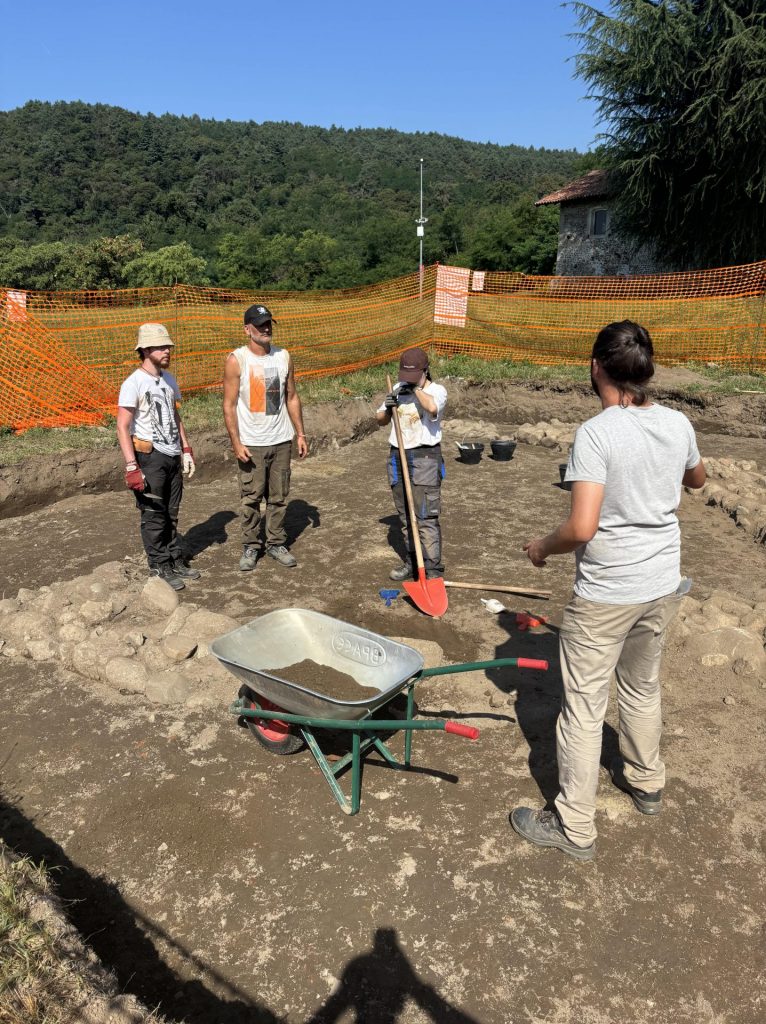The University of Milan is pleased to present the goals of the 2025 excavation campaign at the site of the Oratory of San Vincenzo in Sesto Calende. The event, organized...
Read moreResearch and excavations in the Lower Verbano region


The lower Verbano region is an area of great archaeological potential as, in antiquity, it was characterized by a dense population with characteristics that remained stable from Protohistory to the Roman era. The region was a important crossroads between the Po Valley and the Alpine passes. It was crossed by an overland road that departed from Milan and, after following the Olona valley, reached Sesto Calende and Angera. From there, trade continued until modern-day Switzerland by waterway. The region has, therefore, considerable potential to investigate: 1. settlement patterns and trade over the longue durée and; 2. how the territory adapted to face the invasions coming from beyond the Alps after the fall of the Roman Empire.
The research objective of the ArcheoMeMi group in the Lower Verbano region is to understand the process of human occupation and exploitation of natural resources from the Iron Age to the medieval period in the area between the current municipalities of Angera, Sesto Calende, Golasecca, Somma Lombardo, Vergiate, Arona, and Castelletto sopra Ticino. In particular, it aims to study the dependency relationships that the sites in this area may have had both with Lake Maggiore and the Ticino river. The research also aims to explore the road system and trade in the region, and how this changed throughout the period under examination.
A GIS mapping of all known sites is underway to achieve these objectives. Data collection is conducted by integrating data from the GNA portal – ‘Geoportale Nazionale Archeologia’ with other published and unpublished evidence from archives. Geospatial analyses will be conducted on this dataset to verify the relationships between sites and explore changes in settlement patterns. This analysis is coupled with a detailed analysis of the territory through targeted archaeological investigations (e.g., at Sesto Calende – Oratorio di San Vincenzo) and study of finds.
Papers at conferences and seminars
- Amedeo De Lisi, Enrico Croce, Dig-it. Nuove prospettive per l’archeologia digitale in Italia (Università degli Studi di Milano, Milano, 22/05/2025)
- Amedeo De Lisi, Enrico Croce, “Looking for BVER into the GRASS”
- Emanuele E. Intagliata, Lorenzo Zamboni. Il Basso Verbano tra romanità e medioevo. Scavi in corso presso l’Oratorio di San Vincenzo a Sesto Calende (Museo Archeologico di Angera, Angera, 27/04/2025).
- Emanuele E. Intagliata, Tracking the impact of cities in the countryside. The case of Milan and its hinterland in Late Antiquity (Centre for Urban Network Evolutions, Aarhus University, Aarhus – 04/02/2025).
- Amedeo De Lisi, Enrico Croce, Looking for BVER into the Grass: Bver project, GNA, and Predictive Archeology in ARCHEO.FOSS XVIII 2024, International conference on Open software, hardware, processes, data and formats in archaeological research (Chieti, 19-20/12/2024).
- Emanuele E. Intagliata, Lorenzo Zamboni, Il racconto di uno scavo. Gli archeologi dell’Università Statale di Milano illustrano i recenti scavi all’Oratorio di San Vincenzo (Sesto Calende, Loc. Oratorio di San Vincenzo – 29/09/2024).
- Emanuele E. Intagliata, Amedeo De Lisi, Tra economia circolare e analisi geospaziali – nuove prospettive di ricerca per l’Archeologia Cristiana e Medievale all’Università degli Studi di Milano. In IX Giornata della Ricerca del Dipartimento di Beni Culturali e Ambientali “Maria Teresa Grassi” (Milano, Dipartimento di Beni Culturali e Ambientali, Università degli Studi di Milano – 23/05/2024)‘’
News from the project
Professor Emanuele E. Intagliata will participate in the UrbNet Seminar Series, presenting a paper titled “Tracking the Impact of Cities in the Countryside. The Case of Milan and Its Hinterland...
Read more
On Thursday, May 23rd, at 9:30 AM, the “Ninth Research Day of the Department of Cultural and Environmental Heritage ‘Maria Teresa Grassi’” will take place at the Via Noto 8...
Read more

